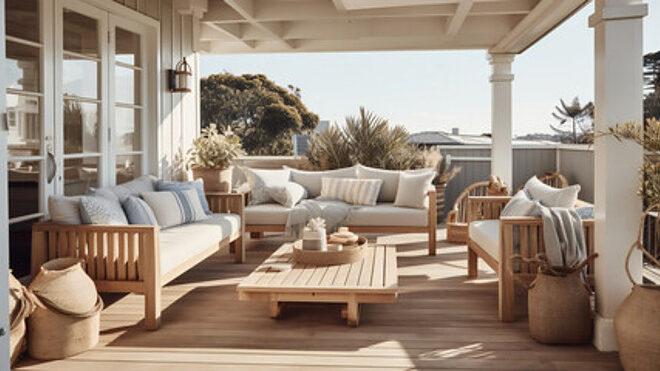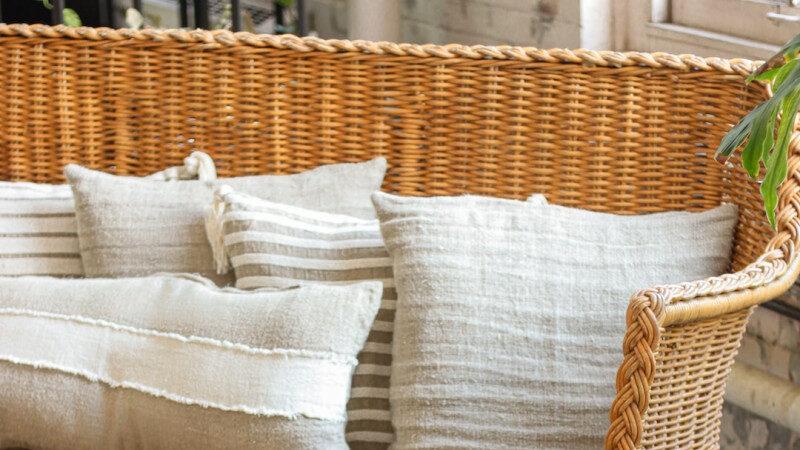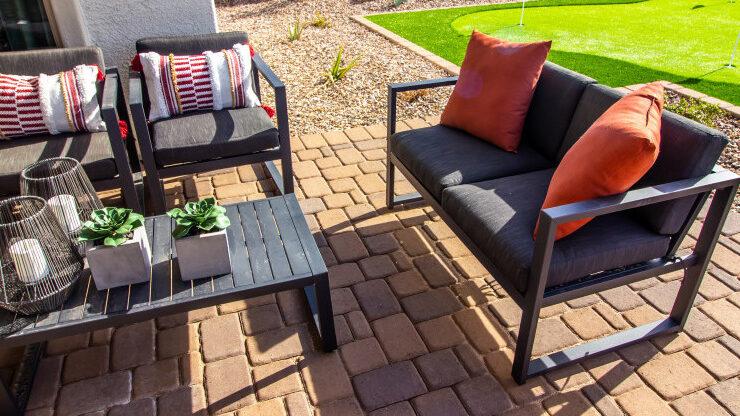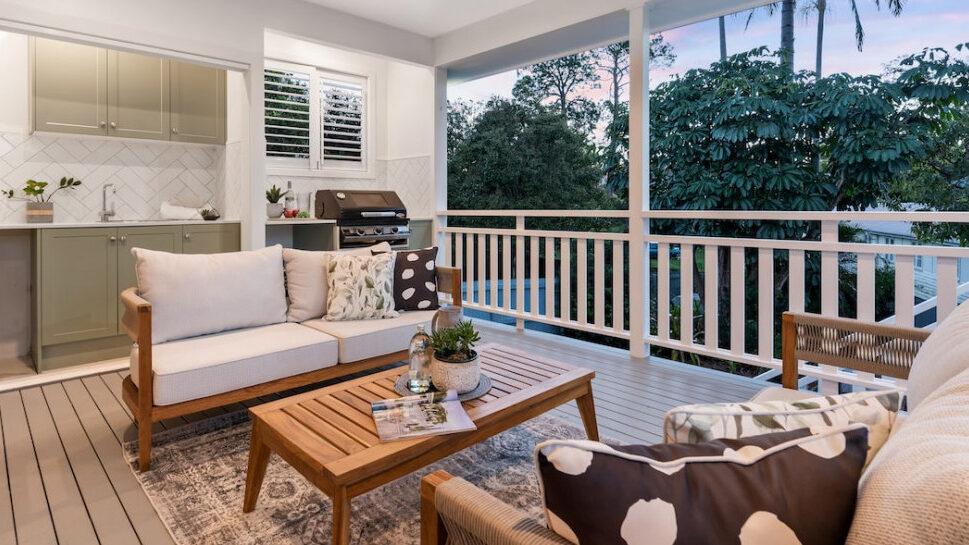The Ultimate Guide to Outdoor Living Room Furniture

Summer is the season of family gatherings, fun patio parties, and lazy afternoons spent lounging on the deck or patio. When it comes to extending your living space outside, outdoor living room furniture is essential for an easy and comfortable spot to hang out. With a vast array of options available, choosing the perfect pieces is key. Whether you have a large backyard or a small balcony, a comfortable and inviting outdoor living room can be the perfect spot to relax and unwind. But with so many different types of outdoor living room furniture available, it can be tough to choose the best options that fit your needs. That’s why I’ve created this ultimate guide to outdoor living room furniture. In this post, we’ll take a closer look at the different types of outdoor living room furniture available to ensure that you’re creating an outdoor space that is both cozy and relaxing.
Outdoor Furniture Materials
One of the most important factors to consider when selecting outdoor living room furniture is the material that it’s made from. Here are a few of the most common materials:
Wicker: Made from natural or synthetic materials, wicker is lightweight and gives outdoor spaces a traditional or coastal flair.
Wood: Outdoor furniture made of wood provides a rustic feel and is incredibly durable, making wood ideal for outdoor spaces.
Metal: Aluminum and wrought iron are popular choices for outdoor living room furniture. They’re sturdy, resilient, and come in a variety of styles.
Plastic: Resin and PVC are two materials often used for outdoor furniture. They can be lightweight and are easy to clean, making them perfect for families with children.
Wicker Furniture

Wicker furniture is popular for its timeless beauty and versatility. It can be woven with various materials, including resin and natural fibers like seagrass or rattan. Wicker furniture is lightweight, which makes it easy to move around your patio or deck. It is also durable and weather-resistant, which makes it an ideal choice in areas with varying weather conditions. However, wicker furniture requires regular maintenance such as cleaning and conditioning because natural wicker can crack, fade, or unravel over time.
Pros: Lightweight, affordable, and provides a traditional or coastal look.
Cons: Can be fragile and less durable than other materials.
Metal Furniture

Aluminum Furniture – Aluminum outdoor furniture is incredibly sturdy, lightweight and rust-resistant, which makes it perfect for outdoor spaces. It requires minimal maintenance, is scratch-resistant, and is a great option for humid areas. Aluminum furniture usually comes in a wide array of styles, ranging from modern to traditional designs. It’s important to note that aluminum patio furniture can become hot to the touch when exposed to direct sunlight, so consider this when choosing the kind of fabric or cushioning.
Steel Furniture – Steel outdoor furniture is incredibly sturdy, heavy, and durable. It’s more affordable than other materials and is available in various styles. Steel furniture is weather-resistant, but it requires regular maintenance, including proper cleaning and rust prevention, to maintain its durability and visual appeal. Steel furniture lacks the luscious natural beauty of wood, but it can give your outdoor space a unique and modern look.
There are many affordable options available like this one: Mainstays Dashwood 4-Piece Outdoor Patio Conversation Set
Pros: Sturdy and stylish, metal furniture can provide both classic and modern looks.
Cons: May rust if not properly treated, can be heavy and hard to move around.
Wood Furniture

The most common wood materials used in outdoor furniture are teak, cedar, eucalyptus, and redwood. Teak is a popular choice because it’s durable, rot-resistant, and does not warp easily. Cedar and redwood are also sturdy, insect-resistant, and aesthetically pleasing. Eucalyptus is fast-growing, easy to find, and has a distinct grain pattern. All these materials of outdoor furniture give the space a natural and classic look.
Teak Furniture – Teak is a popular hardwood material used for outdoor furniture. Its natural oils make it resistant to weathering, and its durability can last a lifetime. Cleaning and maintaining teak furniture is minimal, which makes it easy to keep it looking great all year round. One of the major drawbacks of teak furniture is it doesn’t come cheap. It’s pricier than other materials, but you are investing in high-quality furniture that can last for years.
Pros: Wood furniture is a rustic and durable option for outdoor furniture.
Cons: Can be expensive, require regular maintenance to prevent damage from moisture.
Plastic & Resin Furniture

Plastic and resin outdoor furniture is available in many colors and designs to suit any style. It is lightweight, inexpensive, and easy to maintain. Plastic and resin furniture is also an eco-friendly option because it’s often made from recycled materials. However, plastic furniture is less durable than other materials, and harsh weather conditions can cause it to crack, fade, or warp over time.
Pros: Affordable and easy to clean.
Cons: May not feel as sturdy as other materials and can often look “plastic.”
How to Choose Outdoor Living Room Furniture
Now that you know more about the different types of outdoor living room furniture, here are some tips on how to choose the outdoor furniture that’s perfect for you.
Consider Comfort: Always prioritize comfort when selecting outdoor furniture. Whether you plan to sit for long periods of time or use it for napping, comfort should be top of mind.
Cusions: Cushions are a crucial aspect of outdoor living room furniture. They provide a comfortable spot for sitting, lounging, and even sleeping! Materials vary from polyester to foam to spandex. Waterproof or water resistant cushions are a must-have since they can withstand rain and moisture.
Look for Durability: When selecting outdoor furniture, consider the lifespan that it can last. Aim for furniture that can last through different weather conditions. Make sure the materials you choose can withstand heat, rain, snow, and even strong winds.
Take Measurements: Make sure to measure the space where you plan to place your outdoor living furniture to ensure that it fits and doesn’t overcrowd the area.
Mix and Match: Don’t be afraid to put together different styles, materials, and brands of outdoor furniture. It can give your space a unique look and feel.
Set Your Budget: Set a budget for your outdoor furniture purchases and stick to it. It’s easy to overspend when creating an outdoor living space.
Storage: Outdoor furniture with storage can do wonders in your space. Storage offers a convenient spot to keep cushions, pillows, and throws safe and dry when they’re not in use. Outdoor storage trunks, benches, and ottomans are excellent additional options.
Selecting the right outdoor living room furniture can make all the difference to your outdoor living space, and it’s essential to weigh out the pros and cons of each option before making a final decision. Choose what fits your style and needs, and don’t forget to consider the maintenance and longevity of each type of outdoor furniture material. By doing so, you’ll be sure to have the perfect outdoor space to enjoy with family and friends, all year round!
What is your favorite type of outdoor living room furniture? Let me know if the comments.
Here’s to a great day on the patio!
Jenn in the Outside